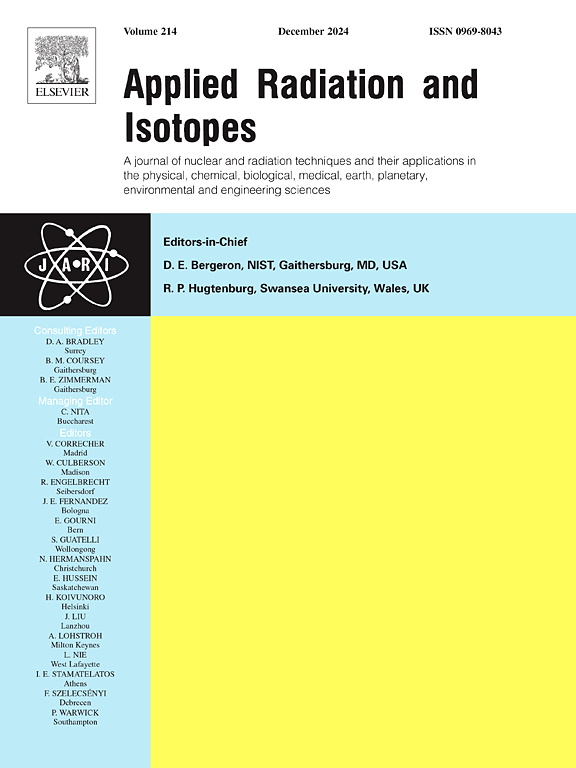Radon escape effect on its progeny's activity in naturally occurring radionuclide decay series
IF 1.6
3区 工程技术
Q3 CHEMISTRY, INORGANIC & NUCLEAR
引用次数: 0
Abstract
We performed theoretical research on radon escape effect on activity of its progenies in 232Th, 228Ra, 238U, and 226Ra decay series. Based on the research results, we predicted that radon escape does not affect activity of its progenies in 232Th and 228Ra series. However, radon escape does affect the activity of its progenies, except for 210Pb, 210Bi and 210Po, in 238U and 226Ra decay series. The theoretical research was based on the Bateman equation. Correspondingly, we conducted experiments to validate the results obtained from the theoretical research on 232Th, 228Ra, and 226Ra decay series. Experiments on radon escape effect on its progenies in 238U series were not conducted due to unavailability of adequate 238U samples. Data obtained from the experiments validated the theoretical predictions for 232Th, 228Ra, and 226Ra series. The information obtained from the study could be useful for an effective NORM waste treatment. Findings of the study may provide a foundation for applying gamma-ray spectrometry to accurately determine the activity of those decay series.
自然发生的放射性核素衰变系列中氡逸出对子代活性的影响
对232Th、228Ra、238U和226Ra衰变系列中氡逸出对其子代活度的影响进行了理论研究。根据研究结果,我们预测在232Th和228Ra系列中,氡逸出不影响其子代的活度。而在238U和226Ra衰变系列中,除210Pb、210Bi和210Po外,氡逸出确实影响其子代的活度。理论研究基于贝特曼方程。相应地,我们对232Th、228Ra和226Ra衰变系列的理论研究结果进行了实验验证。由于没有足够的238U样品,没有对238U系列氡逸出对其子代的影响进行实验。实验数据验证了232Th、228Ra和226Ra系列的理论预测。从研究中获得的信息可能对有效的NORM废物处理有用。研究结果为应用伽玛能谱法准确测定这些衰变系列的活度提供了基础。
本文章由计算机程序翻译,如有差异,请以英文原文为准。
求助全文
约1分钟内获得全文
求助全文
来源期刊

Applied Radiation and Isotopes
工程技术-核科学技术
CiteScore
3.00
自引率
12.50%
发文量
406
审稿时长
13.5 months
期刊介绍:
Applied Radiation and Isotopes provides a high quality medium for the publication of substantial, original and scientific and technological papers on the development and peaceful application of nuclear, radiation and radionuclide techniques in chemistry, physics, biochemistry, biology, medicine, security, engineering and in the earth, planetary and environmental sciences, all including dosimetry. Nuclear techniques are defined in the broadest sense and both experimental and theoretical papers are welcome. They include the development and use of α- and β-particles, X-rays and γ-rays, neutrons and other nuclear particles and radiations from all sources, including radionuclides, synchrotron sources, cyclotrons and reactors and from the natural environment.
The journal aims to publish papers with significance to an international audience, containing substantial novelty and scientific impact. The Editors reserve the rights to reject, with or without external review, papers that do not meet these criteria.
Papers dealing with radiation processing, i.e., where radiation is used to bring about a biological, chemical or physical change in a material, should be directed to our sister journal Radiation Physics and Chemistry.
 求助内容:
求助内容: 应助结果提醒方式:
应助结果提醒方式:


